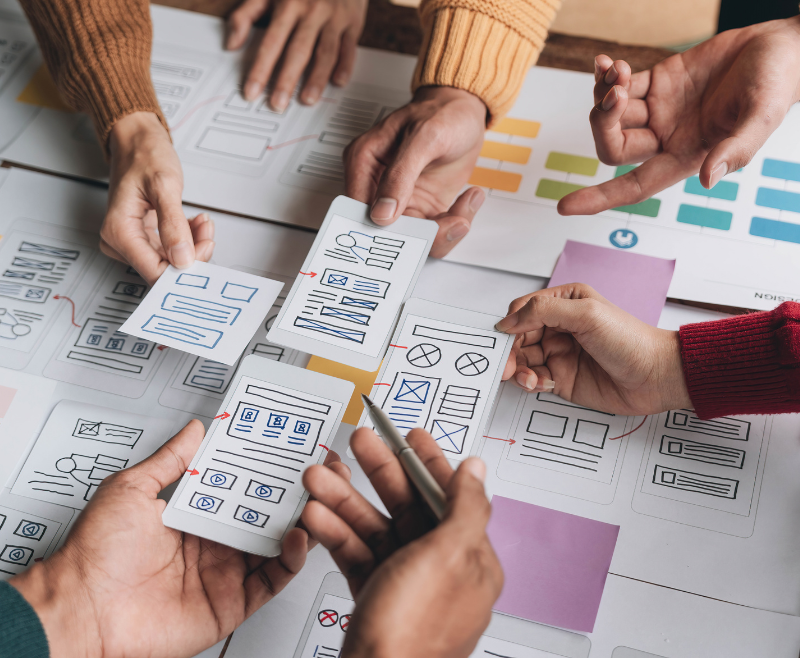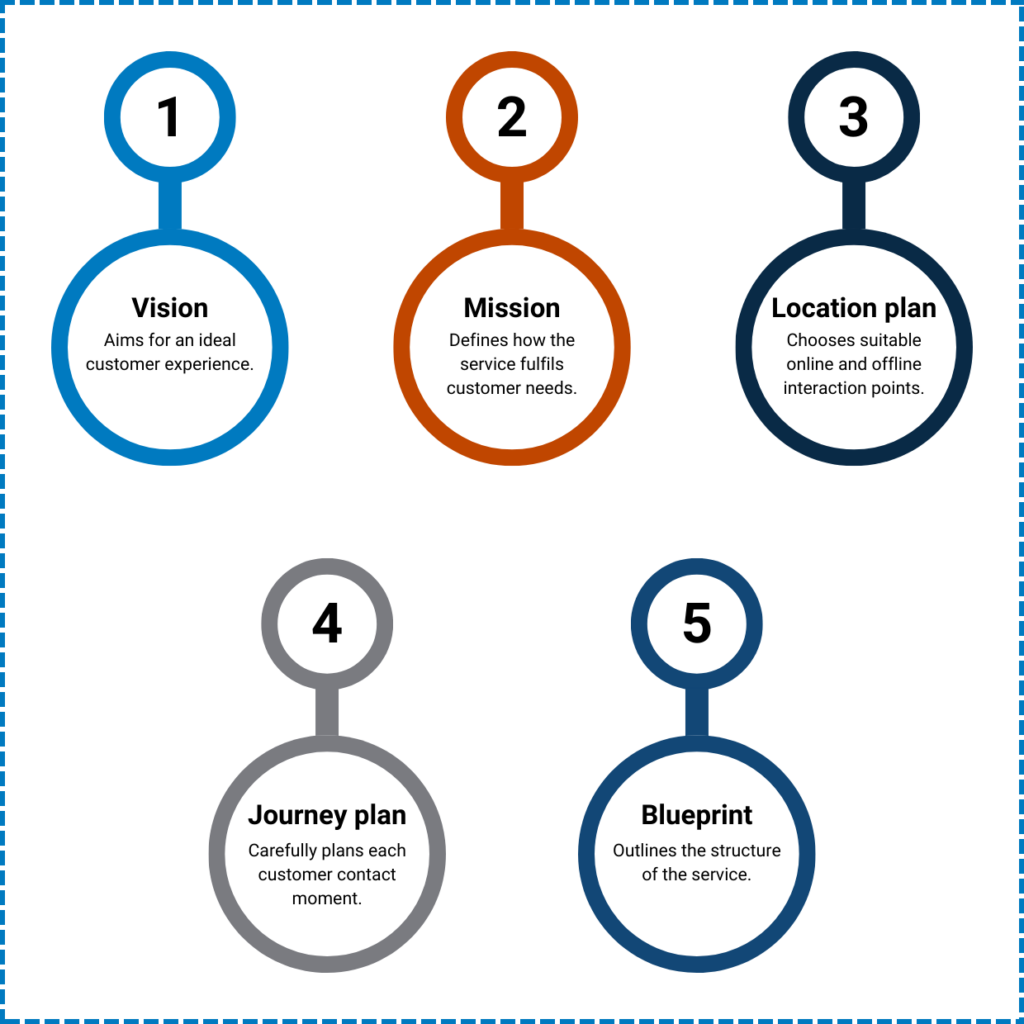Excellence in service through design
Service Design focuses on optimising the entire service delivery process, from backend operations to customer interactions. This approach identifies and eliminates inefficiencies and redundancies, resulting in streamlined service delivery. It not only improves customer satisfaction and loyalty, but also helps reduce costs and increases responsiveness to market changes.
Service Design’s total approach enables companies to stand out in a competitive market by providing customers with a superior experience. Addressing inefficiencies and bottlenecks improves operational efficiency and strengthens customer relationships. This strategic process is essential for companies looking to optimise their service quality and improve their market position.




